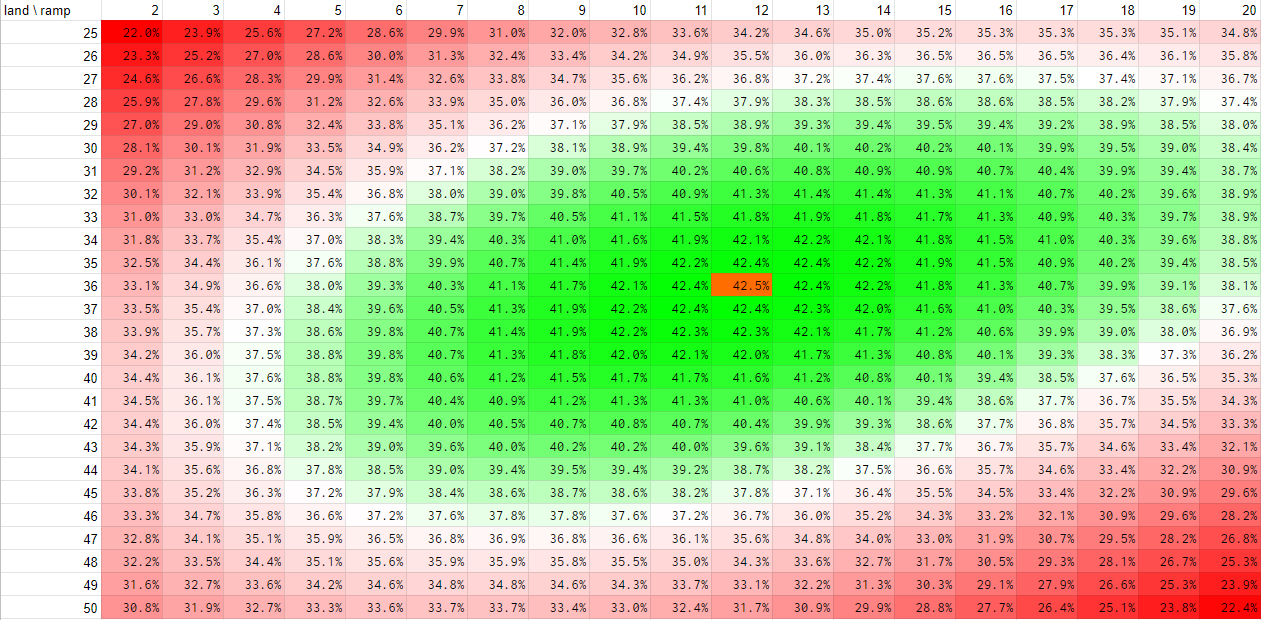I have done some research into this. I will be an absolute rudebag and copy and paste my own findings here. Formatting will be broken and I can't be bothered to fix it. Sorry about that.
TL;DR LOTS OF TEXT, YO.
(They're still available on Reddit if anyone wants to see the original posts. Ask for a link.)
FIRST POST:
TL;DR: You should have 36 lands and 12 ramp spells in your deck.
PSA: I added an update (at the very bottom of the post) that handles the case of accepting 4 land hands and optimising for them. Check it out.
How is this different from everything else people post on this sub? This approach considers mulligans.
This approach considers calculated probabilities.
This post isn't a Monte Carlo simulation.
This post isn't from personal experience.
This approach outlines its limitations clearly.
What are we trying to figure out? Ultimately this short study aims to give a perspective to lands and ramp in EDH. What is the optimal amount of lands and ramp one should have in a deck? As you will find out in more detail soon that is an impossible question in the sense that it needs extra definitions. Our goal here is to figure out some reasonable definitions for what constitutes "an optimal amount" and refine the question.
Let's get to work. "An optimal number" has roughly three components: what's a good opening hand, what are good early/mid game draws and how does one eliminate dead land draws late game. I can already tell you that the last part is impossible with regular probability math or at best so long that nobody would ever read it. Our focus will mainly be on the opening hand because that is the one time you get to see a huge portion of your deck. If you mulligan twice you've already seen 21 cards from your deck which is more than many people draw over the course of the rest of the game. Emphasis should be placed on shaping a good opening hand.
What is a ramp spell? A ramp spell is something that puts you ahead of the "curve" i.e. the mana you'd have available if you were playing lands only. There are many kinds of ramp spells: Llanowar Elves is a "dork" i.e. a creature that produces mana. Arcane Signet is a "rock" i.e. an artifact that produces mana. Rampant Growth is a ramp spell that puts a land from your deck onto the battlefield.
For the purposes of this study we consider a ramp spells to cost 2 or less mana. Not really important for our statistics but provides a basis for what we consider to be a good opening hand.




